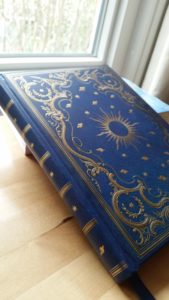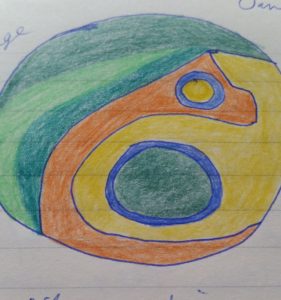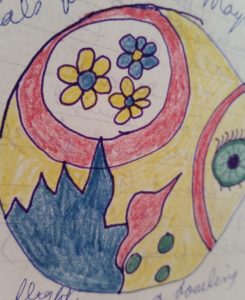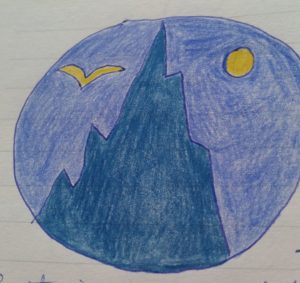
I tend to talk a lot about how much I hate writing first drafts, and trying to complete first drafts of two different novels during the pandemic has been especially challenging. Last December I managed to finish one of them, but it was a slog nearly every day. I told my husband at one point that I had a 500-word minimum per day, and he asked with the wide-eyed innocence of a non-writer, “Do you ever want to write more than 500 words?” Um, no. I guess he didn’t see me on a daily basis struggling to get to my word goal, then slapping the laptop closed and running from it like a long-haired cat with a bit of poo stuck to its butt hair (sorry for the unpleasant image).
I took a different approach with the second novel, inspired by two writers I admire: Lauren Sapala and Amanda Linehan. Their nonfiction is crafted to appeal to specific Myers-Briggs personality types (INFJs for Lauren and INFPs for Amanda). Even if you’re a writer who isn’t into personality types, you’ll still find their books useful. I really enjoyed Lauren’s The INFJ Writer and Amanda’s Productivity for INFPs, and I also love the positive energy they bring to everything they do.

I was desperate to try something new to get out of the seriously stuck state I was in with the second novel. I’d been struggling with it for seven years, and it’s pretty ghastly to spend seven years trying to complete a first draft. After many false starts and rooting around in different eras and settings, looking for something that worked, I think I’m now on the right track, thanks to an intuitive writing exercise I practiced for six weeks.
What is intuitive writing? Lauren is the expert on this, and she offers an intuitive writing course that I learned a great deal from. It blew my mind when she suggested exercises to get into the intuitive writing space that didn’t actually involve writing. I tend not to feel like a writer unless I’m actually putting words on the page/screen, but Lauren helped me see that the things I do to get into a creative mindset are crucial, especially in the early stages of a writing project. I decided to buy a new journal for the purpose (see the first photo) and focus on drawing and colouring to get myself into that space.

This is where Amanda comes in. She draws circles on a blackboard and uses coloured chalk to fill them in and create designs. You can see a photo of her circles and her blog post about them here. When I saw her circles in the background during one of our Zoom calls, I was inspired to try the same thing. I don’t have a blackboard, so I decided to draw circles in my journal and colour them with pencil crayons.
For six weeks in January and February, every weekday started like this: I’d stumble into the kitchen, make a cup of coffee, and settle into my favourite chair with my journal. Then I’d draw and colour a circle. That’s it. I did this for as long as I felt like it. Sometimes fifteen minutes. Sometimes longer. If any interesting ideas came to me while I did this, I jotted them down (it’s hard to avoid words entirely when you’re a writer!). But I didn’t pressure myself to make sense of any of my words or images.

By the end of six weeks, I knew it was time to start plotting and planning out the novel in written form. I sensed that the circle-drawing exercise had fulfilled its purpose. Because this novel is about a mountain climber, I drew a lot of circles with mountains in them and a lot of mountains with circles in them. SO MANY MOUNTAINS. SO MANY CIRCLES. But that period was a really important gift I gave myself, a way to be playful and just daydream instead of obsessively getting words down and focusing on a quantifiable type of productivity. I believe this exercise made me dig deep and form a foundation for the novel that will make it better in the long run. It also took the pressure off to create beautiful sentences. Honestly, writers have the most conflicted relationship with language of anyone I’ve ever met. We sometimes hate words and the limitations of language. That’s why there are other art forms, ready to help when we need it.
If you’re a writer who’s feeling stuck or blocked, try being playful with different types of creative activities. It might surprise you how much they can help!